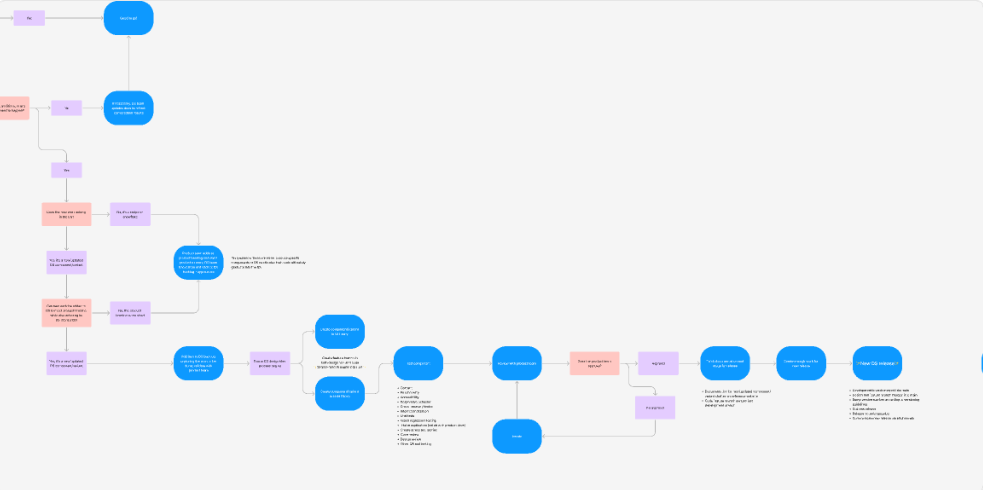Master design system governance with this one weird trick
That one weird trick?
TALK.
What do you do when someone doesn’t see what component they’re looking for in the design system?
TALK.
What do you do when someone has questions about what a component does, if it meets their needs, or how they should use it?
TALK.
What should happen when someone has a concern about the design system?
TALK.
What should happen when someone encounters a bug or issue with the design system?
TALK.
What do you do when someone has questions, comments, or feedback around any aspect of the design system?
TALK.
It’s that simple.
I’ve written before about the importance of establishing a successful design system governance model. In fact, I created and published a design system governance diagram that spells out all of the gory details that can go into governing and releasing design systems.

Our team at Big Medium has worked with dozens of design system teams on their governance process, and when we get into the details, people sometimes get intimidated and overwhelmed. They look at the process and see complexity, which is understandable! But the good news is that this process can be broken down into a rough gist:

Even better news is that the gist of that gist is: when in doubt, have a conversation. A healthy chunk of the whole governance workflow takes place as a quick chat on Zoom or Slack/Teams.
A little conversation goes a long way
A quick conversation can save hours, days, or weeks of work, and it’s absolutely magical when it happens. This is where the millions of hours/dollars of savings come from! The design system team can direct users to existing solutions, saving the user team from having to unnecessarily reinvent the wheel. We can’t assume that users will automatically know how to use the system properly just because components exist and even if they’re well-documented. A little direction or nudge via a conversation provides clarity and helps build rapport between the design system makers and users.
The conversation goes a little something like this:
- What’s going on? What’s the question, comment, or concern?
- Does any new work need to happen?
- If work does need to happen, is it part of the core design system or a recipe?
- If the work is part of the core design system, does the team have time to do it in the timeframe?
The flow chart details the decision tree, but in order to answer these questions in the first place you must make it clear how to have the conversation in the first place.
A culture of conversation
The Nord Health Design System does a fantastic job spelling out the various ways of connecting with the design system team. There are some great practices on display here:
- Dedicated Slack/Teams channels
- Email address
- Office hours
- FAQs
- Detailed bug/support process
These are great tactics to consider, but like all things design systems the challenges around successfully implementing this has to do with humans. Creating a new Slack channel takes 10 seconds, but creating a culture of communication is where the real work lies! In our experience, simple advice like “talk to each other” can be difficult to implement in organizations that don’t have a history of open conversation and close collaboration. Sometimes relationships are frayed, teams are distrustful, or other forces are at play that keep people away from each other. That is the work of the design system: to dive headfirst into those cultural challenges and overcome them. Embodying a service-oriented mindset, proactively reaching out to teams, and being genuinely kind and curious are critical muscles for design system teams to devleop. The more you can do to make connections and demonstrate your willingness to help will make it easier for teams to reach out when they have questions.
So yeah, get out there and TALK!